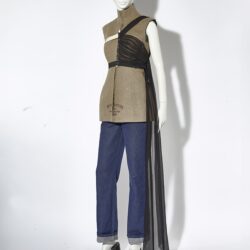Museum Monitoring in Four Key Points

Yes, you read that right: MuMo, or Museum Monitoring. MoMu, together with several partners, is working on a data logging system for the heritage sector. Dieter Suls, coordinator of the Dries Van Noten Study Center, explains the how and why of this scientific collaboration in four key points.

A data logging system, what's in a name?
DIETER SULS: "A data logger is a combination of several sensors that monitor environmental factors. Those systems are frequently used in museums. Unfortunately, existing commercial devices have a number of flaws. For example, off-the-shelf data loggers are often expensive and you can't plug additional sensors into them. If you want to monitor something else, you're out of luck."
"That's why we are working on an affordable and high-quality alternative. We want to create a solution that records what is relevant to museums and to which we can connect new sensors in the future. In addition, we want to structure the recorded data in a way that allows us to share our data with other systems."
From prototypes to guinea pigs
DS: "To fulfill these wishes, we work together with various partner institutions. For example, the Product Development department at the University of Antwerp is developing the hardware and researchers at imec (IDlab - Ghent University) are responsible for structuring the collected data. Together they worked out a prototype this spring."
"In addition to those technical partners, a number of museums and heritage institutions are also working on it. In the second phase, for example, we will test our data logger at the Royal Museum of Fine Arts Antwerp, the AfricaMuseum, the Lokeren City Museum, the Flemish Support Centre for Cultural Heritage and the Antwerp Maritime Academy. In order to arrive at a system that meets all their and our needs, we will give input together to the university partners."
Control of environmental factors
DS: "From that input, we tentatively selected a number of environmental factors to focus on. In addition to regularly monitored factors such as temperature and humidity, we are thinking about light (lux), vibrations and dust particles in the air. Although we can define relatively well ourselves exactly what data we are looking for, we want to use our data logger to monitor other things in the future."
"One of those things is monitoring moth traps. In principle, we need to monitor them daily, but in practice this happens less frequently. To do it more systematically, for example, a camera with image recognition can already be a solution."
Collective expertise and exploration
DS: "Because we want to share our knowledge in addition to our collections, we created a Github page about our projects. There you can find all the plans and components to recreate our data logger. As long as you don't commercialize it, you may build upon our system. We are very curious to explore what all else our data logger can be used for."

For more info on MuMo, please visit the Github page. Discover the different projects of the Dries Van Noten Study Center here



